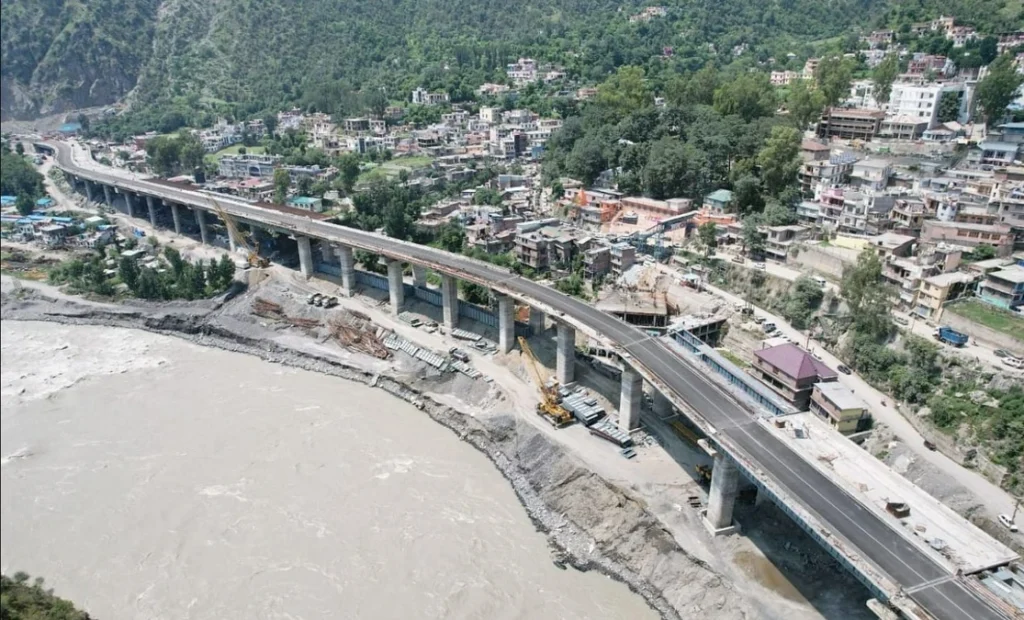“Discover Ramban District, a serene destination in Jammu & Kashmir, known for its lush landscapes, tranquil rivers, historic charm, and natural splendor.”

Ramban District: Nurturing Nature’s Beauty and Cultural Heritage
Nestled in the heart of the picturesque Jammu and Kashmir region in India, Ramban District stands as a testament to the awe-inspiring beauty of nature and the richness of cultural heritage. With its diverse landscapes, vibrant traditions, and historical significance, the district has become a destination that captivates the mind and soul.
Encompassing an area of approximately 1,329 square kilometers, Ramban District boasts a wide range of natural landscapes. From the serene banks of the Chenab River to the towering peaks of the Pir Panjal range, the district offers a visual feast for both residents and visitors. The dense forests that blanket the hillsides are not only home to a variety of flora and fauna but also contribute to the ecological balance of the region.
The district’s centerpiece is undoubtedly its majestic terrain. The famed Patnitop hill station, perched at an altitude of 2,024 meters, is a coveted retreat for those seeking respite from the scorching summers of the plains. The panoramic views of the surrounding valleys and the opportunity to partake in adventure sports like trekking and paragliding make Patnitop a year-round attraction.
Ramban District’s cultural heritage is equally captivating. The district is a microcosm of the diverse communities that call Jammu and Kashmir home. The local festivals and fairs, such as the Baisakhi Mela and Lohri, pulsate with the rhythms of traditional music and dance. The intricate craftsmanship of the region is showcased in the form of handwoven textiles, delicate Pashmina shawls, and ornate artifacts.
Adding to the district’s historical significance is the ancient temple of Vaishno Devi, one of the holiest pilgrimage sites for Hindus. The temple, nestled in the Trikuta Mountains, draws millions of devotees each year who embark on a spiritual journey to seek blessings from the deity.
However, the district is not without its challenges. The rugged terrain presents infrastructural hurdles, making connectivity a vital concern. Efforts to improve road networks and transportation systems are ongoing to ensure that the district’s beauty can be accessible to all.
Ramban District’s charm lies in its ability to harmoniously blend the modern with the traditional. As urban centers develop, there’s a concerted effort to preserve the local way of life and the delicate balance of the ecosystem. Initiatives for sustainable tourism and responsible development are gaining traction, ensuring that generations to come can experience the allure that Ramban District has to offer.
In conclusion, Ramban District encapsulates the essence of natural beauty and cultural diversity that define the Jammu and Kashmir region. With its breathtaking landscapes, rich traditions, and historical significance, the district beckons travelers and enthusiasts alike. As efforts continue to enhance accessibility and preserve its heritage, Ramban District is poised to remain a jewel in the crown of northern India.
Famous Places in Ramban District
Ramban District in Jammu and Kashmir, India, is adorned with an array of famous places that showcase its natural beauty and cultural richness. From serene hill stations to ancient temples, here are some of the district’s notable attractions:
Patnitop: A popular hill station located at an altitude of 2,024 meters, Patnitop offers breathtaking panoramic views of the surrounding valleys. It’s a year-round destination known for trekking, paragliding, and natural beauty.
Vaishno Devi Temple: Situated in the Trikuta Mountains, this ancient temple is a revered pilgrimage site for Hindus. Devotees undertake a spiritual journey to seek blessings from the deity Vaishno Devi.
Sanasar: Known as the “mini Gulmarg,” Sanasar is another enchanting hill station in the district. It’s famous for its lush meadows, adventure sports, and tranquility.
Gool Gulabgarh: This area is famous for its apple orchards and pristine natural beauty. The picturesque landscapes and pleasant weather attract visitors seeking serenity.
Ramban Town: The district’s headquarters, Ramban Town, is located on the banks of the Chenab River. It serves as a gateway to several nearby attractions and offers glimpses of local life.
Nathatop: A vantage point offering panoramic views of snow-covered peaks, Nathatop is a paradise for nature enthusiasts and photographers.
Banihal: Known for its captivating landscapes, Banihal serves as a key transit point connecting Jammu and Kashmir through the Jawahar Tunnel.
Sudh Mahadev Temple: An ancient shrine dedicated to Lord Shiva, the Sudh Mahadev Temple is famous for a natural black marble shivling and an annual pilgrimage.
Banihal-Qazigund Tunnel: A marvel of engineering, this tunnel connects Banihal and Qazigund, making travel between the regions more convenient.
Bheem Bazar: A local market known for its handicrafts, textiles, and traditional items, offering visitors a chance to take home a piece of Ramban’s culture.
Chenab View Hotel: Offering panoramic views of the Chenab River and surrounding mountains, this hotel provides a comfortable stay for travelers.
Ramkund: A sacred water tank near Sudh Mahadev Temple, Ramkund is believed to be the spot where Lord Rama took a bath during his exile.
From spiritual sites to serene landscapes, Ramban District is a treasure trove of experiences waiting to be explored. Whether you’re drawn to its ancient temples, stunning hill stations, or natural wonders, each place in this district has a unique story to tell, inviting you to immerse yourself in its charm and allure.
Read More :-
Pulwama District: Saffron Fields, Natural Beauty, and Culture